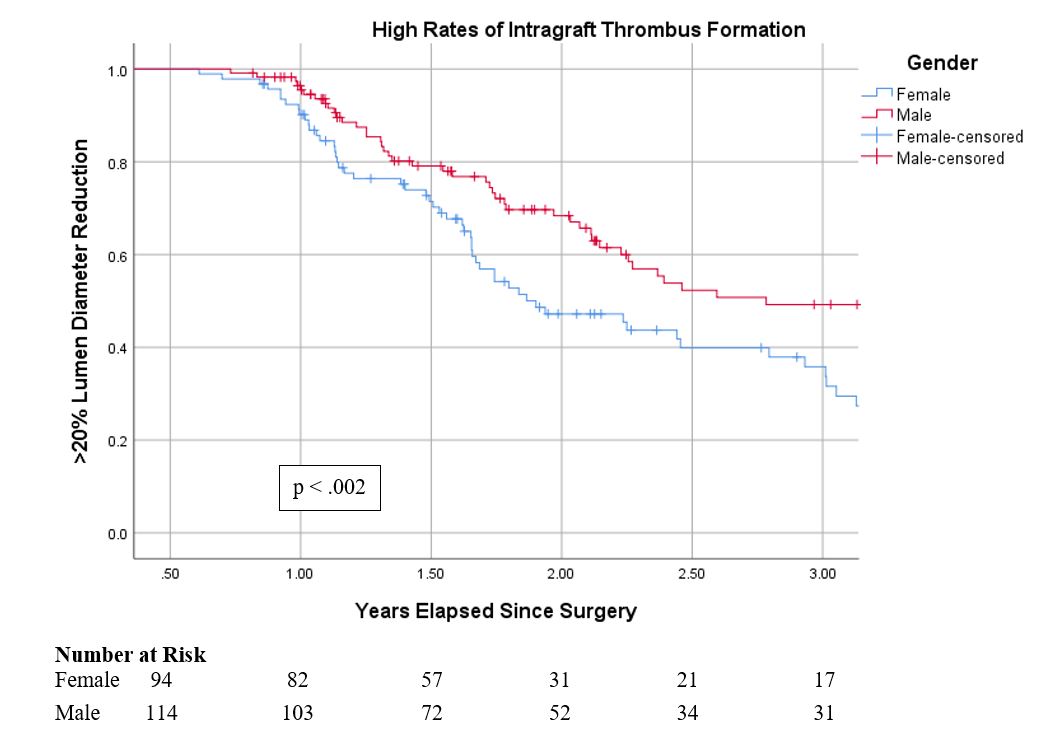Female Gender is Associated with Increased Thrombus Burden within Stent Graft Following Thoracic Endovascular Aortic Repair
Marissa C. Kuo, Richard A. Meena, Christopher R. Ramos, Jaime Benarroch-Gampel, Bradley G. Leshnower, Yazan Duwayri, William D. Jordan, Jr., Ravi R. Rajani
Emory University School of Medicine, Atlanta, GA
BACKGROUND: Mural thrombus within stent-grafts develops at an unclear incidence following thoracic endovascular aortic repair (TEVAR). The significance of this phenomenon has not been determined, nor have the risk factors for development of intra-graft thrombus. Small graft diameter is hypothesized to be a risk factor for thrombus development.
METHODS: A retrospective analysis was performed of a multicenter health-care system including all patients who underwent TEVAR between July 2011 and July 2019 with at least one year of subsequently available surveillance contrast-enhanced commuted tomography (CT) imaging. Standard demographic, pre-operative, intra-operative, and post-operative variables were collected. Measurements were obtained via direct off-line images from CT scans. Patent intra-graft diameters were compared to baseline and interval change values were normalized to time to follow-up. The primary outcome measure was annual rate of intra-graft thrombus formation.
RESULTS: 208 patients met inclusion criteria (94 women, 114 men) with a median follow-up of 822 days. Mean (SD) annual rate of percent intra-graft diameter reduction was 10.5% (7.7) for women and 7.6% (5.6) for men (p=0.0026). Multivariate analysis demonstrated female gender (p=0.0283), preoperative diagnosis of hypertension (p=0.0449), and need for coverage of the left subclavian artery (p=0.0328) were all significant predictors of intra-graft thrombus formation. Small aortic diameters were not independently found to be associated with development of thrombus, nor was concomitant use of anti-platelet or anti-coagulation medications. High rates of thrombus formation, defined as >20% intra-graft diameter reduction, were associated with increased need for any re-intervention, including for malperfusion, endoleak, and symptomatic aneurysm (p=0.0249). Kaplan-Meier estimate demonstrated a significant gender-associated difference in high rates of intragraft thrombus formation (p=0.00189).
CONCLUSIONS: In this analysis, female gender is shown to be the most significant non-modifiable risk factor for intra-graft thrombus formation following TEVAR. Development of thrombus is not benign as such findings were associated with increased need for re-intervention. This finding may be attributable to differences in aortic compliance or gender-associated differences in coagulation pathways and merits further investigation. Surveillance following thoracic stent grafting must account for patient-specific variations in complication risk.
Back to 2021 Abstracts

